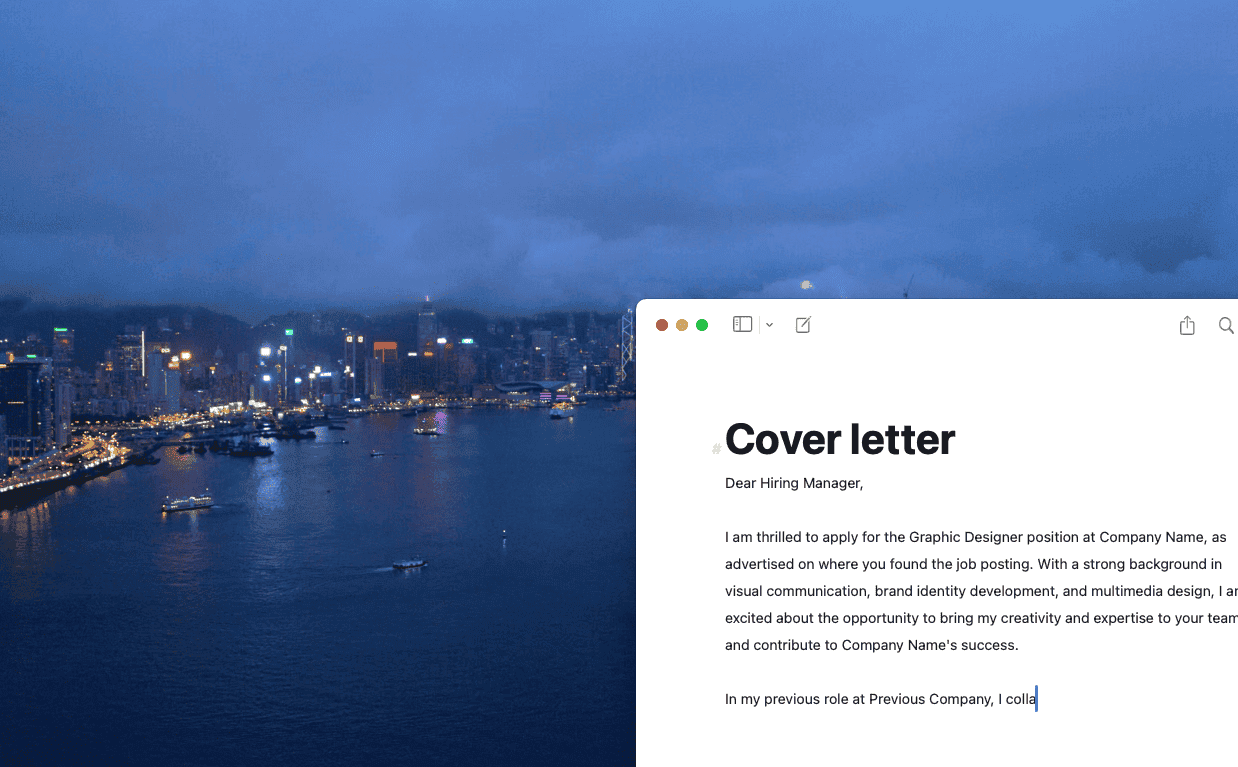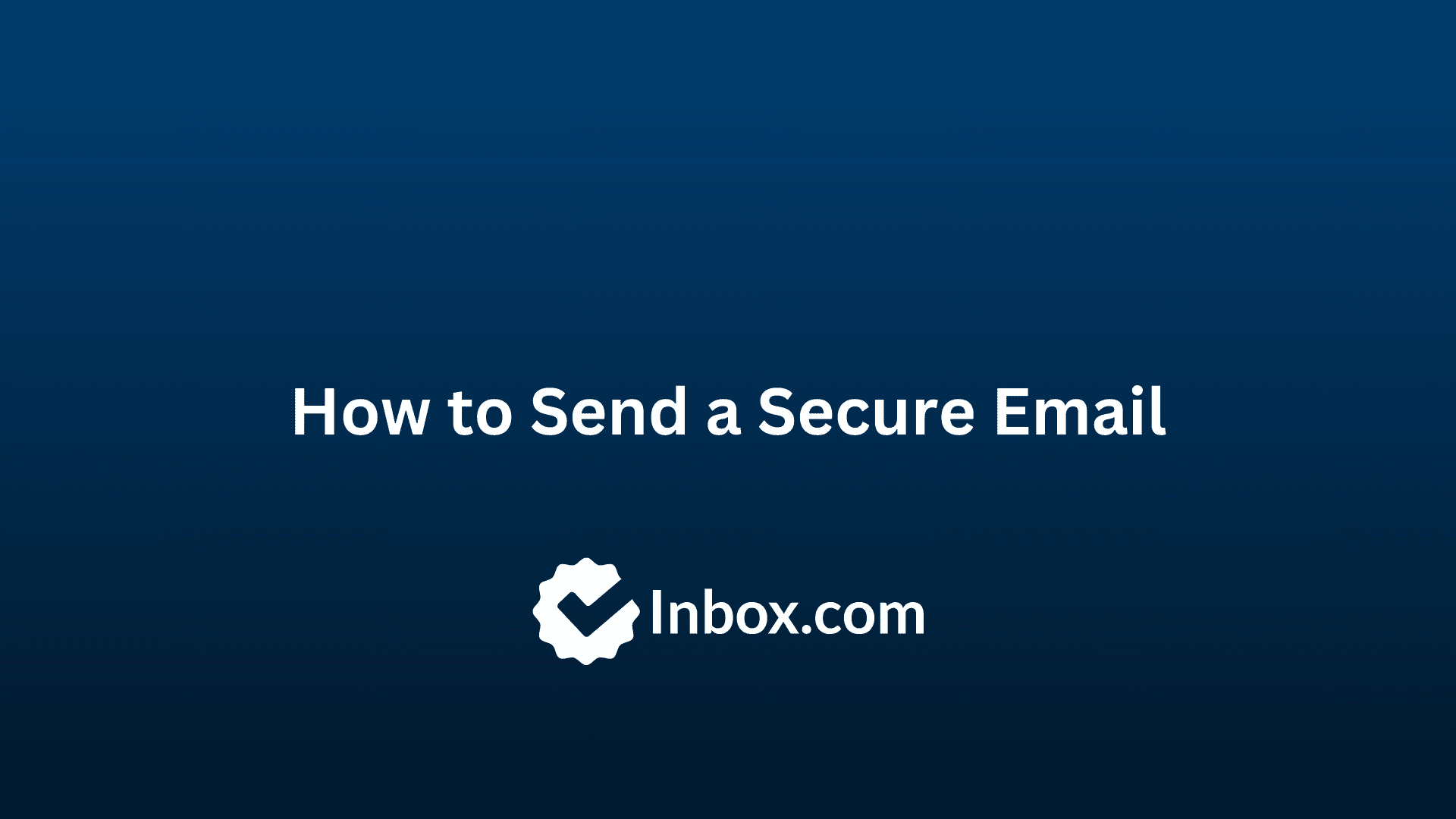
How to Write a Cover Letter: A Comprehensive Guide with Examples (2024)
Crafting a compelling cover letter is the first step towards landing an interview. It’s usually the first impression an employer gets before even seeing your resume, and it will help to set the tone and establish your personality before getting into your qualifications and suitability for the position.
Whether you're applying for a job, internship, or generally submitting your resume for consideration, understanding how to write a cover letter can significantly enhance your chances of success.
What is a Cover Letter?
A cover letter is a formal document accompanying your resume that introduces yourself to potential employers, highlighting your qualifications, experiences, and interest in a specific job or internship. It offers you the opportunity to showcase your personality and passion for the role in a more personalized manner than a resume alone.
Cover Letter Format
The format of a cover letter typically follows a standard business letter structure. It includes your contact information, the date, the recipient's contact details, a salutation, body paragraphs, and a closing. Ensure that your cover letter is concise, well-organized, and visually appealing, using a professional font and maintaining consistent formatting throughout.
As your cover letter will often be sent as an email, check this guide on how to write an email for some general tips on subject lines, email greetings, structuring the main content, and signing off.
Cover Letter for a Job
When applying for a job, a cover letter for your resume is often expected, and it serves as your initial introduction to potential employers. It should be customized for each position, showcasing how your skills and experiences fit the job requirements. A well-crafted cover letter can distinguish you from other applicants and increase your chances of securing an interview, especially if you can show that you’re genuinely aligned with the company’s goals.
Cover Letter for an Internship
For internship applications, a cover letter is equally essential. It allows you to convey your enthusiasm for the opportunity, relevant skills, and willingness to learn. Even if you have limited professional experience, your cover letter can highlight academic achievements, extracurricular activities, and relevant coursework that demonstrate your potential value to the organization.
Writing a Cover Letter
Let’s get into how to write a cover letter, step by step:
Step 1: How to Address a Cover Letter
When addressing your cover letter, it's essential to find out the name and title of the hiring manager or recruiter whenever possible. Addressing the letter to a specific individual adds a personal touch and demonstrates your initiative. A quick note on how to address a cover letter without a name. If you're unable to identify the recipient, you can use a general greeting such as "Dear Hiring Manager" or "Dear [Company Name] Recruiting Team."
Step 2: What to Include in a Cover Letter
Writing a compelling cover letter requires careful attention to detail and a strategic approach. Begin by thoroughly researching the company and the position to tailor your letter accordingly. Highlight your most relevant experiences and accomplishments, using specific examples to demonstrate your qualifications. Keep your language professional, yet engaging, and avoid using generic templates or clichés. Instead, strive to make a memorable impression that sets you apart from other candidates by showing you understand what the company is about.
Structure-wise, a well-written cover letter should include the following elements:
-
Introduction: Start by stating the position you're applying for and how you learned about it. Express your enthusiasm for the opportunity and briefly introduce yourself.
-
Body Paragraphs: Use one or two paragraphs to highlight your relevant experiences, skills, and achievements. Provide specific examples that demonstrate your qualifications and fit for the role. Tailor your content to align with the job description and company's needs.
-
Closing Paragraph: Summarize your interest in the position and reiterate your enthusiasm for the opportunity. Thank the employer for considering your application and express your willingness to discuss further in an interview.
-
Closing: End your cover letter with a professional closing, such as "Sincerely" or "Best regards," followed by your name and contact information.
By using this kind of cover letter template, you can keep a clear and structured approach whilst also easily adjusting your content each time to customize it for each specific contact.
Before you send
Remember maintain professionalism throughout and always proofread your cover letter before you send it off. Check this quick list of cover letter dos and don’ts so you can ensure you’ve done everything you can and haven’t made any glaring errors along the way.
Note for students: While it may be reasonable to apply for internships with your university email, it probably won’t come across as particularly professional for proper job applications. Contacting an employer from a free email account with a funny name you made when you were an adolescent also won’t be particularly impressive. You may want to use a service like Inbox.com and create a business email account that shows you’re a serious professional.
Cover letter examples
Here are some short cover letter samples that you can use as templates for your own letter. Note that although the content should be adapted both to you and to the company you’re applying to, a similar structure applies in all cases.
1. Marketing Manager Cover Letter:
Dear [Hiring Manager's Name],
I am writing to express my interest in the Marketing Manager position at [Company Name], as advertised on [where you found the job posting]. With over five years of experience in marketing strategy development, campaign management, and brand positioning, I am excited about the opportunity to contribute to your team and drive results for [Company Name].
In my previous role at [Previous Company], I led cross-functional teams to develop and execute innovative marketing campaigns that resulted in a 30% increase in brand awareness and a 25% boost in lead generation. My ability to analyze market trends, identify customer insights, and leverage data-driven strategies has consistently delivered impactful results and exceeded organizational objectives.
I am particularly drawn to [specific aspect of the company or job description], and I am eager to bring my expertise in digital marketing, social media management, and content development to support [Company Name]'s mission of [mention company mission or values].
Thank you for considering my application. I am enthusiastic about the possibility of joining [Company Name] and contributing to its continued success. I am available for an interview at your earliest convenience and can be reached at [Your Phone Number] or [Your Email Address].
Sincerely, [Your Name]
2. Software Engineer Cover Letter:
Dear [Hiring Manager's Name],
I am writing to apply for the Software Engineer position at [Company Name], as advertised on [where you found the job posting]. With a Bachelor's degree in Computer Science and three years of hands-on experience in software development and coding, I am excited about the opportunity to contribute to your team and develop innovative solutions for [Company Name].
In my previous role at [Previous Company], I played a key role in designing and implementing scalable software solutions that optimized workflow efficiency and enhanced user experience. My proficiency in programming languages such as Java, Python, and JavaScript, coupled with my strong problem-solving skills, has enabled me to deliver high-quality software solutions that meet and exceed client expectations.
I am impressed by [specific aspect of the company or job description], and I am eager to leverage my technical skills and passion for innovation to support [Company Name]'s goals of [mention company goals or objectives].
Thank you for considering my application. I am eager to further discuss how my background and expertise align with the needs of [Company Name] and am available for an interview at your earliest convenience. Please feel free to contact me at [Your Phone Number] or [Your Email Address] to schedule a discussion.
Sincerely, [Your Name]
3. Graphic Designer Cover Letter:
Dear [Hiring Manager's Name],
I am thrilled to apply for the Graphic Designer position at [Company Name], as advertised on [where you found the job posting]. With a strong background in visual communication, brand identity development, and multimedia design, I am excited about the opportunity to bring my creativity and expertise to your team and contribute to [Company Name]'s success.
In my previous role at [Previous Company], I collaborated with cross-functional teams to create visually compelling designs that effectively communicated brand messages and engaged target audiences. My proficiency in Adobe Creative Suite, coupled with my attention to detail and passion for design, has allowed me to deliver innovative solutions that align with client objectives and exceed expectations.
I am particularly drawn to [specific aspect of the company or job description], and I am eager to leverage my design skills and artistic vision to support [Company Name]'s mission of [mention company mission or values].
Thank you for considering my application. I am enthusiastic about the possibility of joining [Company Name] and contributing to its creative endeavors. I am available for an interview at your earliest convenience and can be reached at [Your Phone Number] or [Your Email Address].
Sincerely, [Your Name]
FAQs
What is a cover letter for a job?
A cover letter for a job is a formal document submitted alongside a resume during the application process. It introduces the applicant to the potential employer and highlights their qualifications, experiences, and interest in the specific job position.
What is a cover letter for a resume?
A cover letter for a resume is a document that accompanies a resume when applying for a job. While the resume provides a summary of the applicant's skills and experiences, the cover letter offers additional context and insight into their suitability for the position.
What is the purpose of a cover letter?
The purpose of a cover letter is to introduce the applicant to the potential employer, showcase their qualifications and experiences, and express their interest in the job position. It allows applicants to personalize their application and demonstrate their enthusiasm and suitability for the role.
What does a cover letter look like?
A cover letter typically follows a formal business letter format, including the sender's and recipient's contact information, a salutation, body paragraphs, and a closing. It should be well-organized, concise, and visually appealing, with a professional tone and consistent formatting.
How long should a cover letter be?
A cover letter should be concise and to the point, typically no longer than one page. It should provide enough information to highlight the applicant's qualifications and interest in the position without overwhelming the reader with unnecessary details.
What should be in a cover letter?
A cover letter should include the sender's and recipient's contact information, a formal salutation, an introduction stating the position being applied for and how the applicant learned about it, body paragraphs highlighting relevant qualifications and experiences, and a closing expressing gratitude and interest in further discussion.
How to Start a Cover Letter
To start your cover letter effectively, consider using a strong opening sentence or attention-grabbing statement that immediately captures the reader's interest. You can mention a mutual connection, reference a recent company accomplishment, or highlight a specific aspect of the job that excites you.
How to End a Cover Letter
Ending your cover letter on a high note is crucial to leave a lasting impression. In the closing paragraph, reiterate your interest in the position and express your gratitude for the opportunity to apply. Convey confidence in your ability to contribute to the company's success. Finally, use a professional closing, such as "Sincerely" or "Best regards," followed by your name.
Updated: April 23, 2024 at 2:30 PM
Published: April 10, 2024 at 4:33 PM


